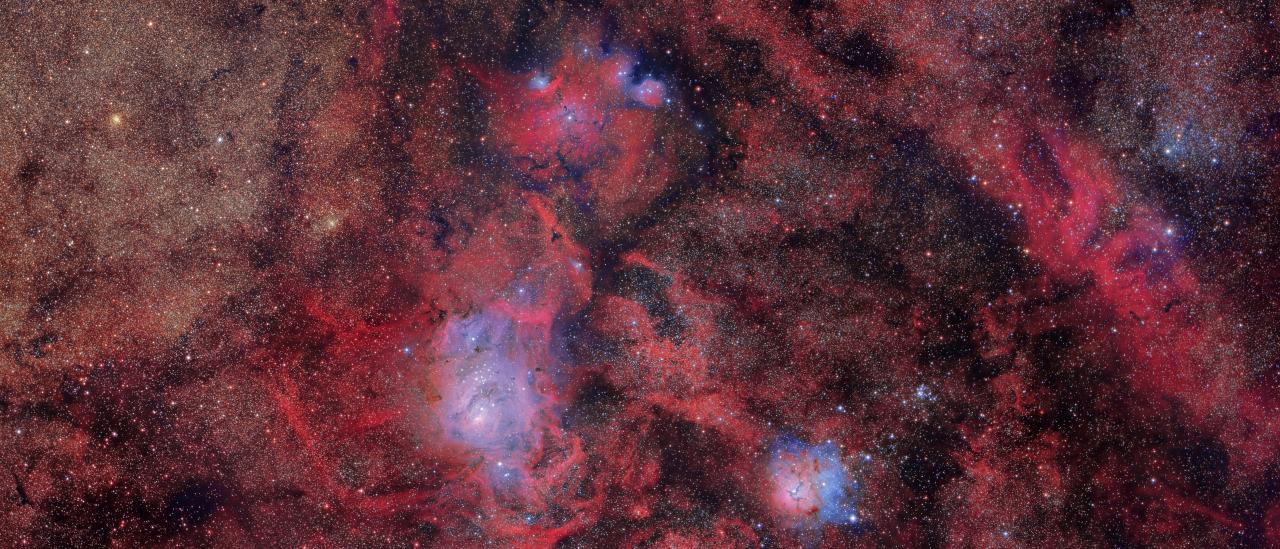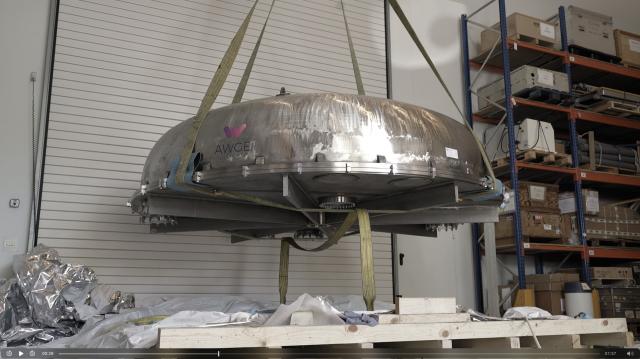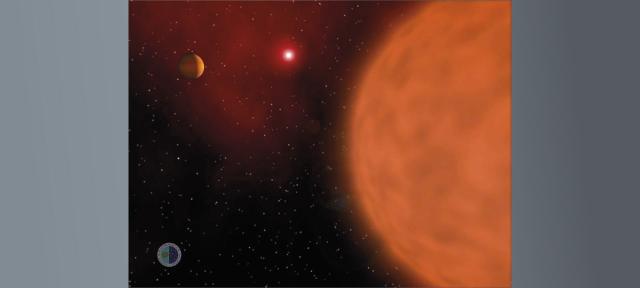Stars have not always existed, nor are they eternal. All of them, both the thousands that we can see with the naked eye and the tens of thousands of trillions that are not, are born thanks to natural physical processes that we know today, in the interior of immense nebulae, composed mainly of hydrogen (H) and some helium (He), the simplest and most abundant chemical elements in the Universe. Stars evolve during the first phases of their life in groups of different sizes that sooner or later they will end up abandoning. In these initial stages, the newborn stars illuminate the matter that surrounds them, exciting with their light the hydrogen atoms, and that re-emit it to a wavelength of 656nm (intense red), known as Hα, giving rise to the HII Regions.
The image shows numerous astronomical objects. Around the centre, three HII regions stand out for their intense red colour: the "Lagoon Nebula" (also known as Messier 8, M8 or NGC6523), the "Trifid Nebula" (M20 or NGC6514) and NGC6559. The three are gigantic clouds of gas and dust located about 5,000 a.l. away where stars are forming like a star cradle. Structures such as bok globules (clouds of gas and dust collapsing to form new stars) and Herbig-Haro objects are found there, providing further evidence of ongoing star formation. Inside M8, we can see very young stars in the OB association, forming the NGC6530 stellar cluster, composed of less than a hundred stars just 2 million years old, some 100,000 times brighter than the Sun because they are dozens of times more massive. But to reach this spectacular brightness, they must burn their fuel at a frenetic rate, so they are relatively exceptional. Their short life ends in a spectacular explosion called a supernova and inside they leave a neutron star or a black hole as a reminder of their ephemeral existence.
In addition to the HII regions, we can see different types of star clusters. Above and to the right of the Trifida is the Open Star Cluster M21 (NGC6531), a set of 57 young stars of about 4.6 million years of age located at about 4,250 a.l. A little further and hidden, behind the dust and gas present in our galactic disk, are the old globular clusters NGC6544, at almost 10,000 a.l., and NGC6553, at about 20,000 a.l.. Both are more than 12 billion years old.
The area covered by the sky, marked with a red square on the stellar map, is in the constellation Sagittarius, close to the direction towards the centre of our galaxy. The image is the result of adding 18 exposures of 600s in each of the 3 wide filters R(red), G(green) and B(blue), plus 26 exposures of 900s in the narrow filter Hα with the Astrógrafo Sky Treasure Chest (STC) of the UC3. Author: D. López ©IAC



